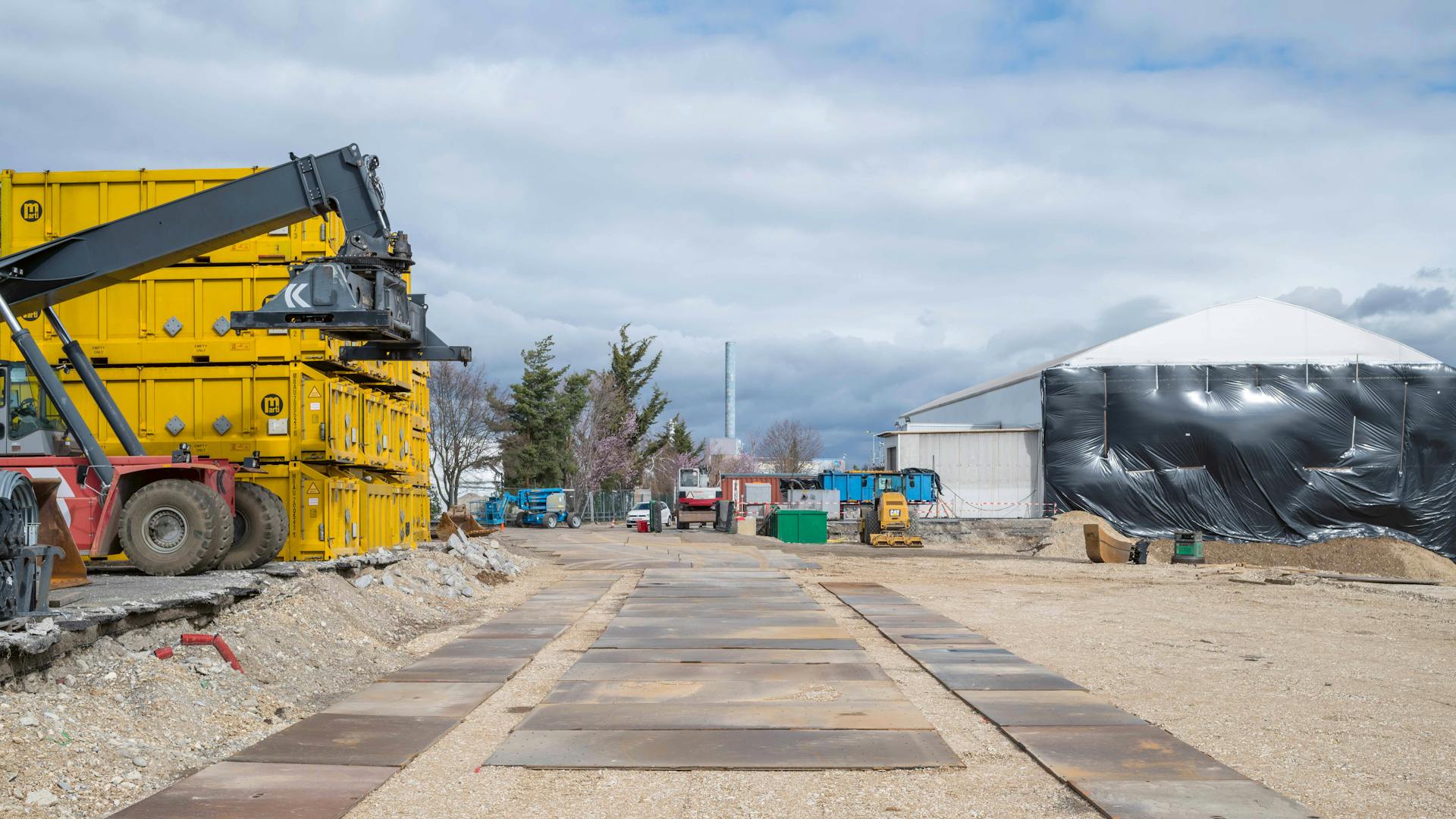
Three-stage wastewater and groundwater treatment plant with activated carbon filter.
Published on 01/07/2021
Once soil remediation was completed, the site was backfilled with clean gravel and topsoil. Excavation had been done to a depth of 12 meters below ground surface, which meant that large amounts of gravel and soil were needed. Additional soil was sourced from gravel pits and construction sites in France and Switzerland.
Backfilling also required adhering to the stipulations of the French ministerial decree (arrêté ministériel) of October 28, 2010, on inert material. As part of this process, soil and gravel information was gathered by the project team, including the origin of the materials.
Besides HCH limits, values were specified for heavy metals (arsenic, copper, cadmium, mercury, nickel, lead and zinc), the sum of total hydrocarbons (all compounds containing carbon and hydrogen), so-called BTEX chemicals (benzene, toluene, ethylbenzene and xylene), halogenated volatile organic compounds (HVOCs) and polycyclic aromatic hydrocarbons (PAHs).
Materials from outside the remediation site could only be used for backfill if the total HCH concentration did not exceed 0.1 mg/kg. If the material came from within the remediation site, the threshold was less than 5 mg/kg of HCH.
Stringent precaution was also taken with a view to protecting groundwater. To avoid any risk of pollution, a groundwater pump had already been installed close to the HCH pit in 2002. This groundwater pump acted as a barrier between the contaminated groundwater and the Rhine. The extracted groundwater was treated in the industrial wastewater treatment plant until 2012.
When the remediation project started in 2012, two additional groundwater pumps were installed. The groundwater was treated in a specially designed wastewater treatment plant located on the remediation site.
The wastewater treatment plant also treated rainwater and the water used for cleaning the vehicles and containers. The wastewater plant had three parallel process lines containing activated carbon filters with a volume of 5 m3 (in a total of six tanks).
The treatment plant was designed in a flexible fashion and was modified during each phase of the remediation project. For example, as soon as the gravel wash was no longer in use, the capacity of the wastewater plant was reduced.
The treated water was continuously monitored before its discharge into the Rhine. The water was analyzed for four HCH isomers, all chlorobenzenes, dioxins, furans and benzene. The water was also analyzed for additional parameters such as chemical oxygen demand (COD), biological oxygen demand (BOD) and suspended solids. Water monitoring results were reported to the authorities at set time intervals. Monitoring results from the pumped groundwater was reported monthly. Monitoring results from the treated water, which was emitted into the Rhine, was reported weekly. All results were compared with set effluent limits from the prefectural order. To ensure that the wastewater treatment plant removed the contaminants efficiently, the project team conducted additional sampling beyond what was stipulated in the order.
Sludge generated from site operations was collected in a sludge trap and was analyzed for contaminants every two months before disposal at one of the approved waste and recycling facilities.
Five groundwater wells were also installed on the site, some of which will be in place for a number of years after the remediation project is finished. The groundwater was monitored each month and tested for HCH, TCB, dioxins, furans and total hydrocarbons.
As an additional control measure, the Office for Environment and Energy (Amt fuer Umwelt und Energie, AUE) of the canton of Basel-City collected water samples from the Rhine (upstream in Birsfelden and downstream at the Palmrainbruecke) to analyze for HCH, TCBs and tetrachlorobenzenes.
After soil remediation was completed, components of the wastewater treatment plant as well as the groundwater pumps were left in place to monitor whether HCH concentrations in the groundwater are still achieving remediation targets. Groundwater monitoring and reporting of groundwater conditions to DREAL will resume in the foreseeable future.










